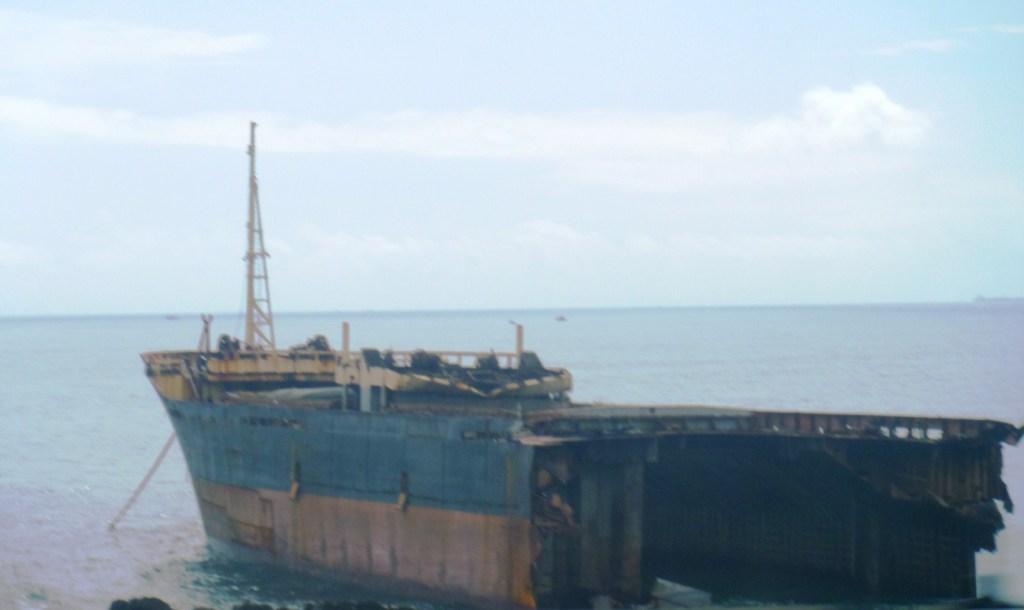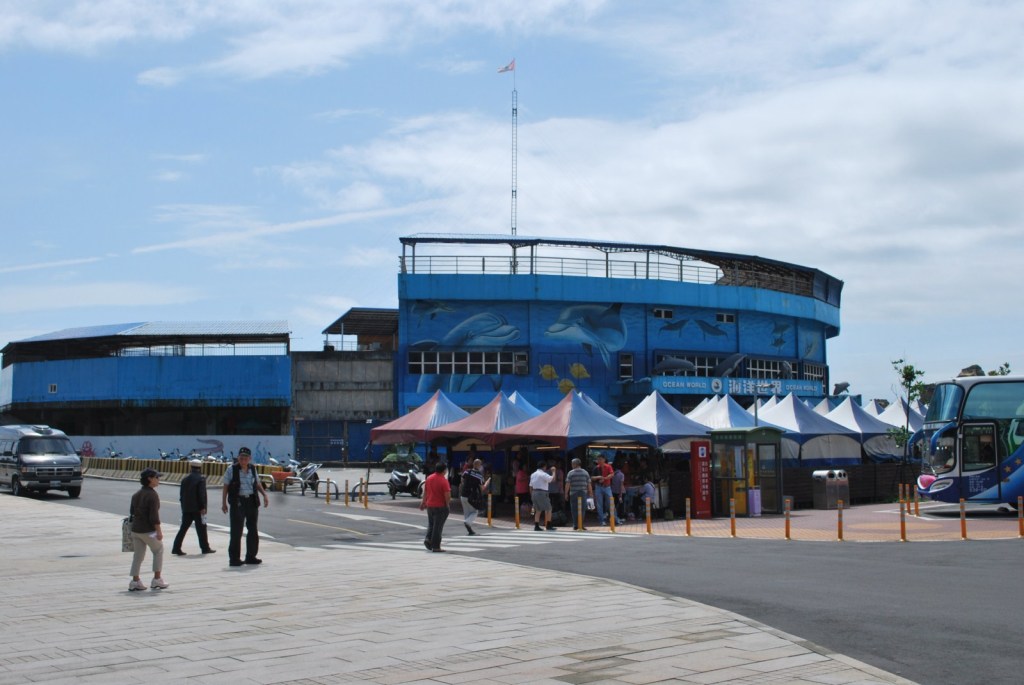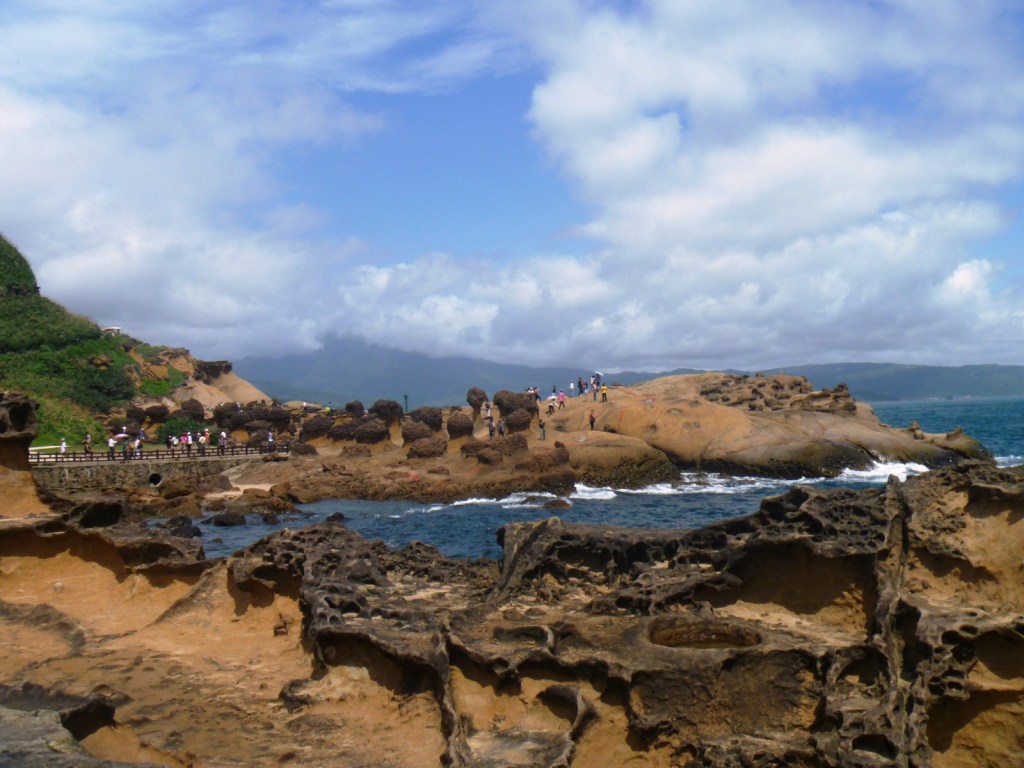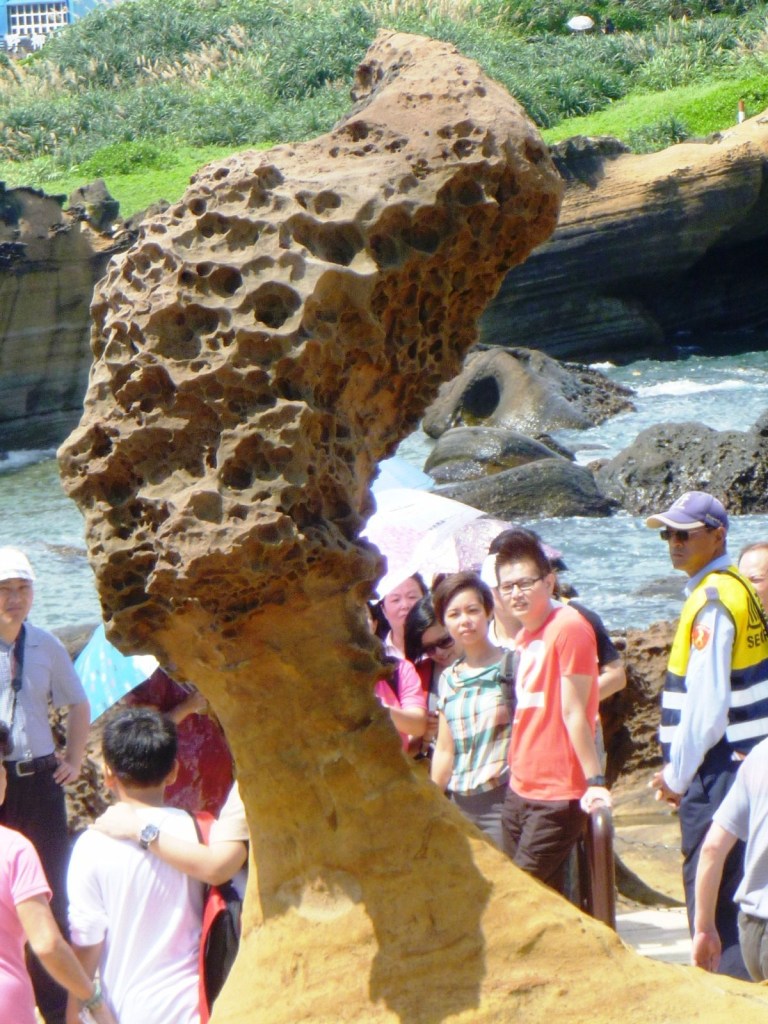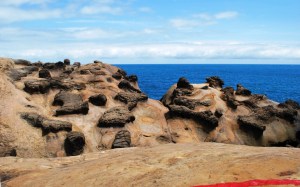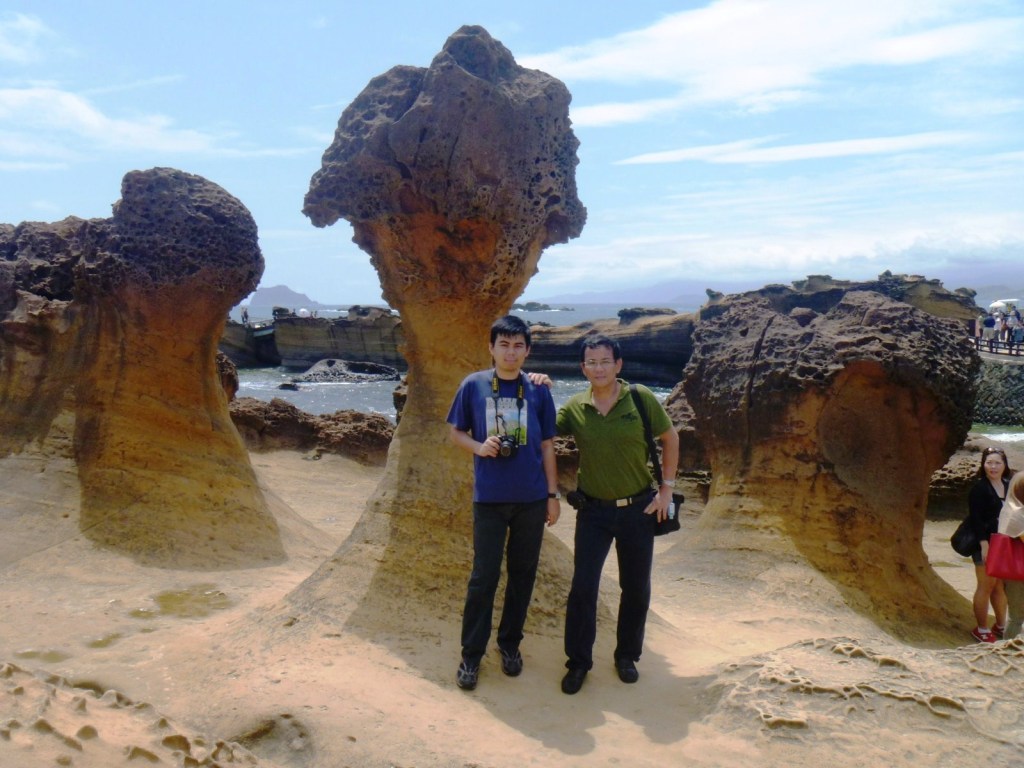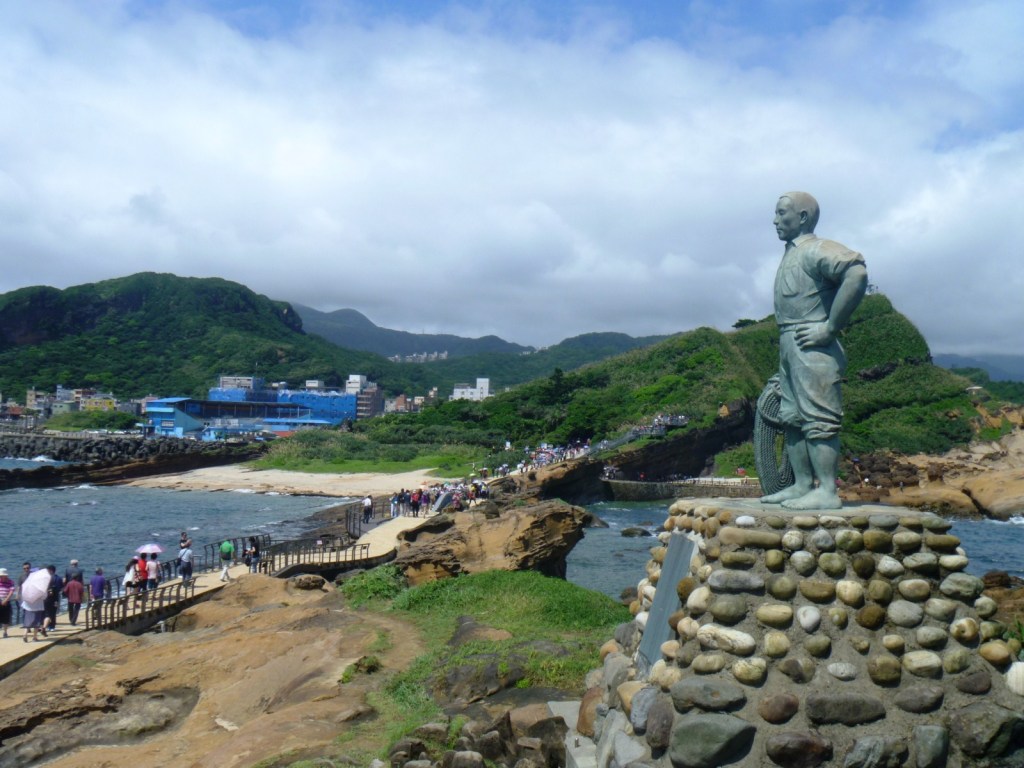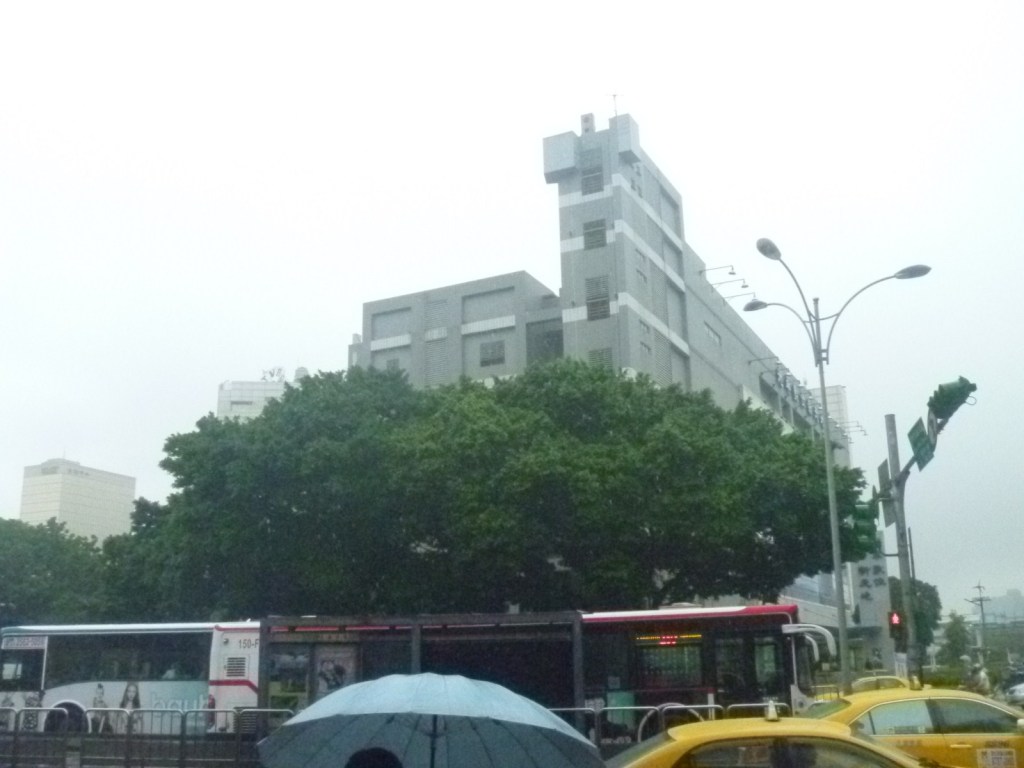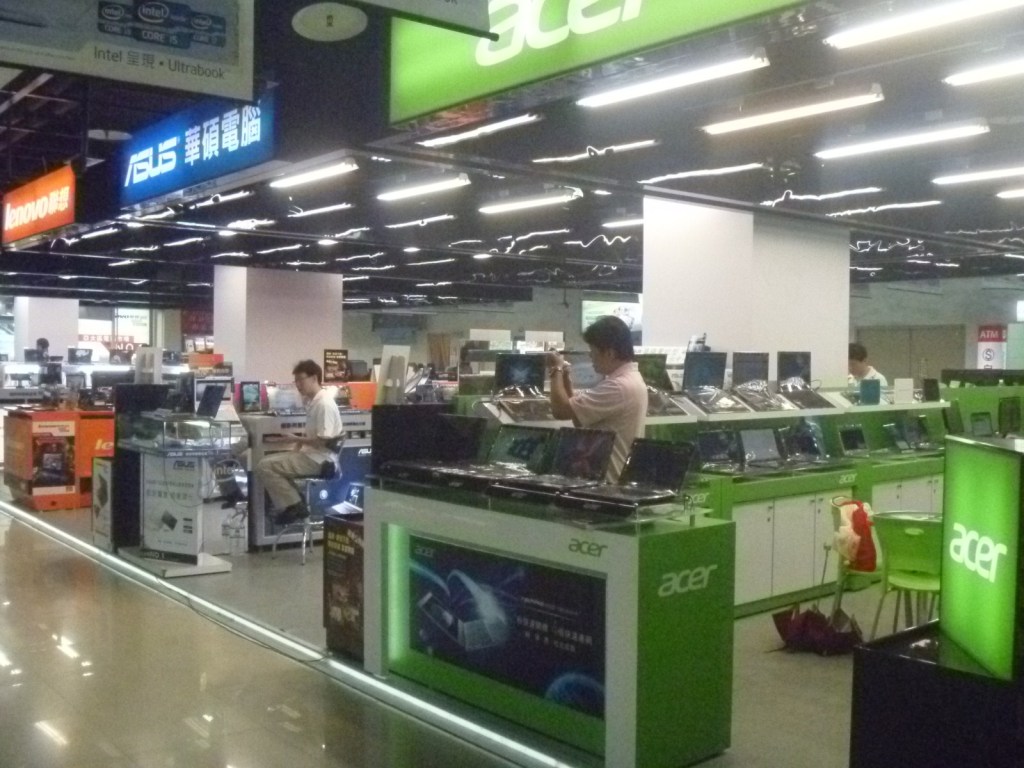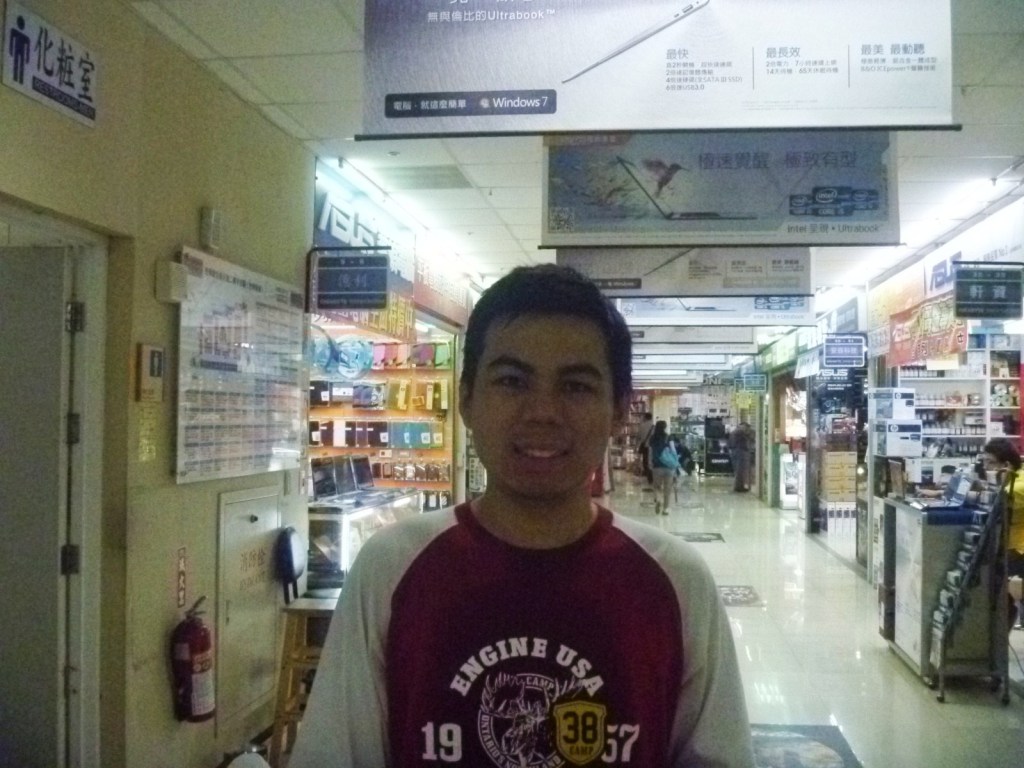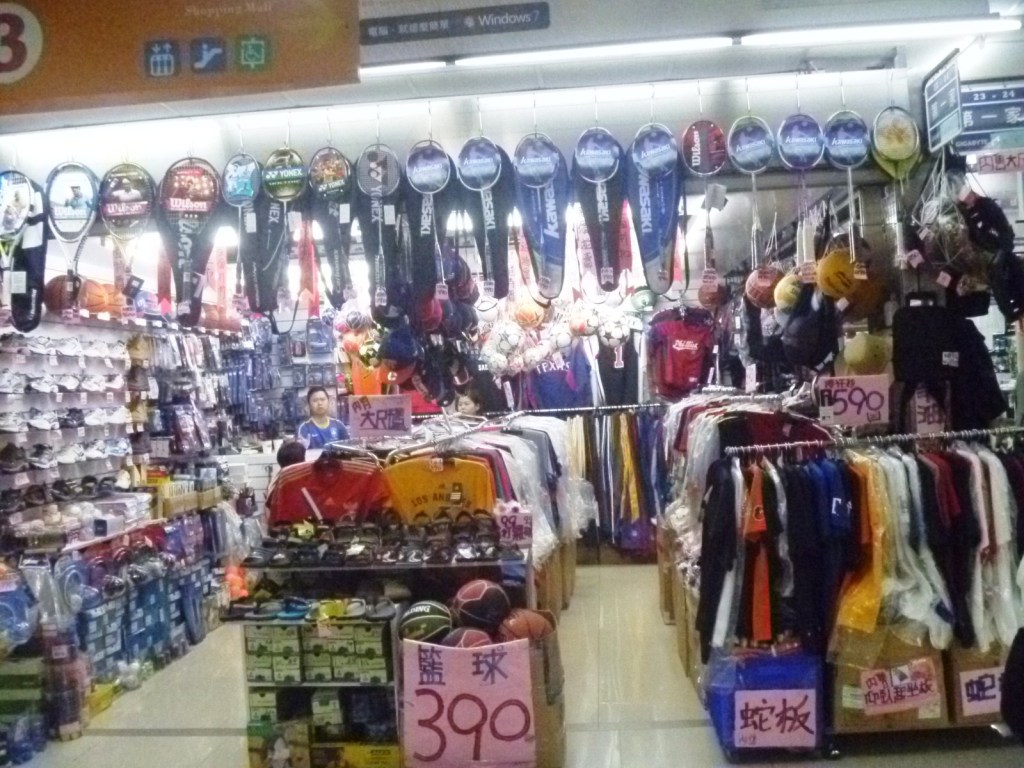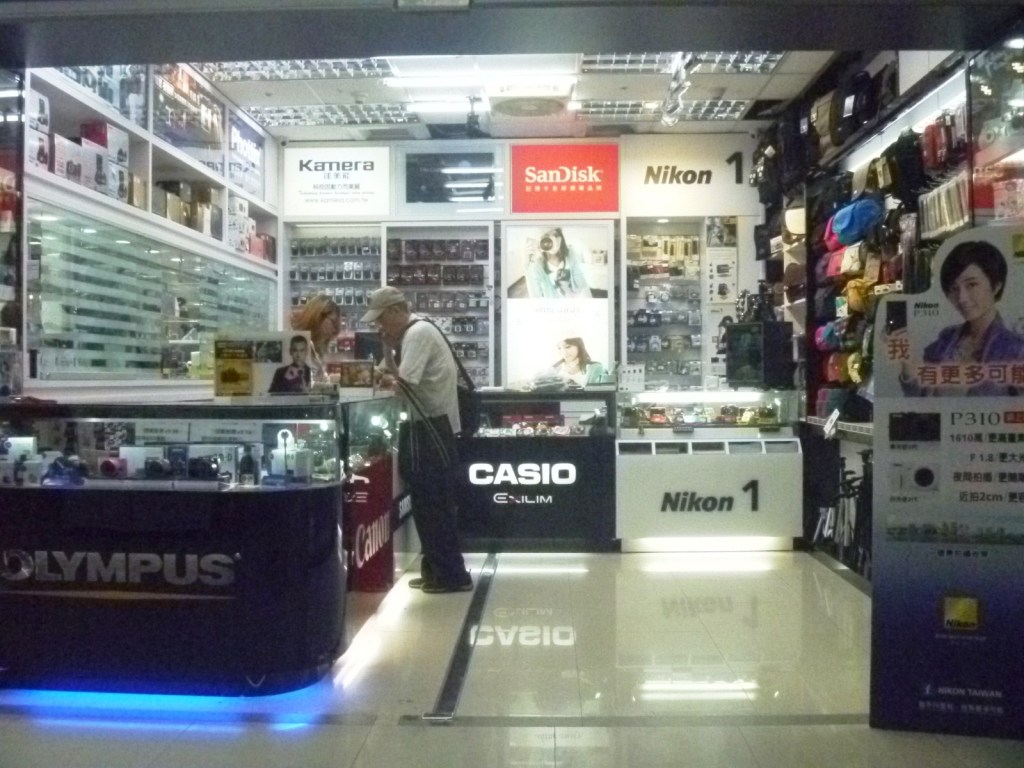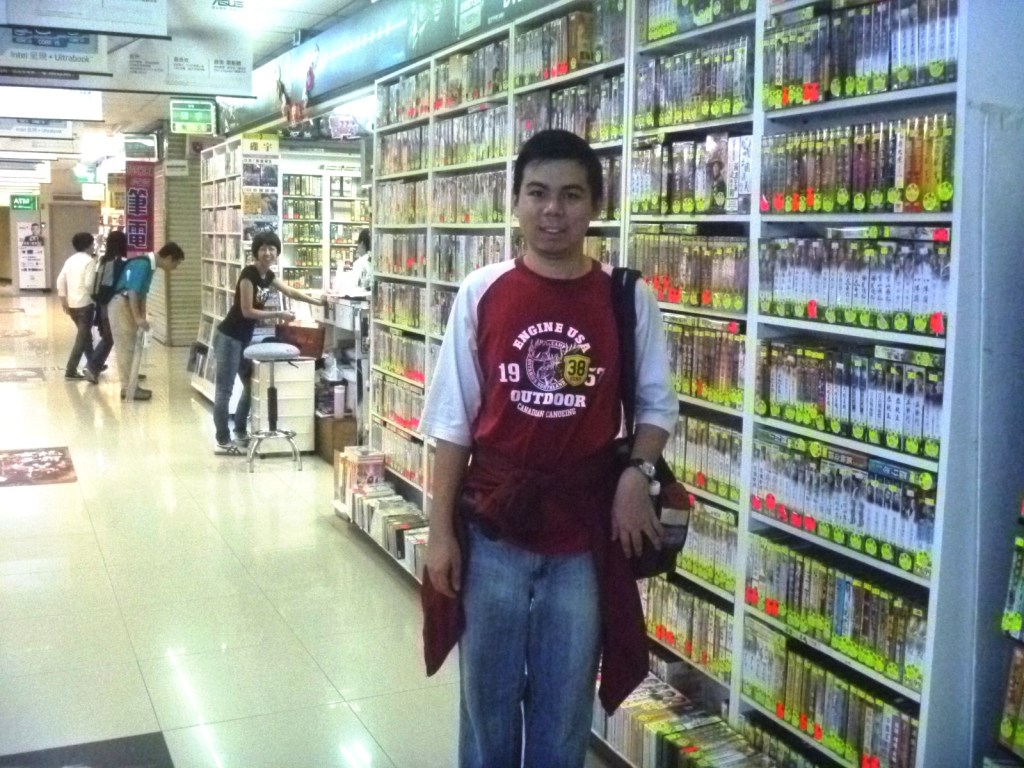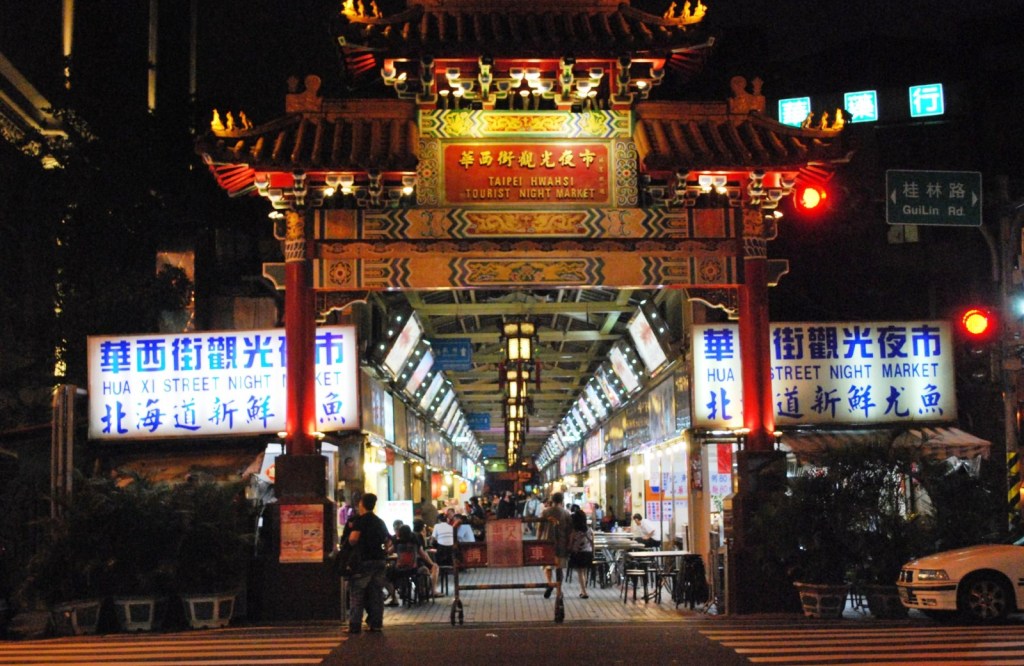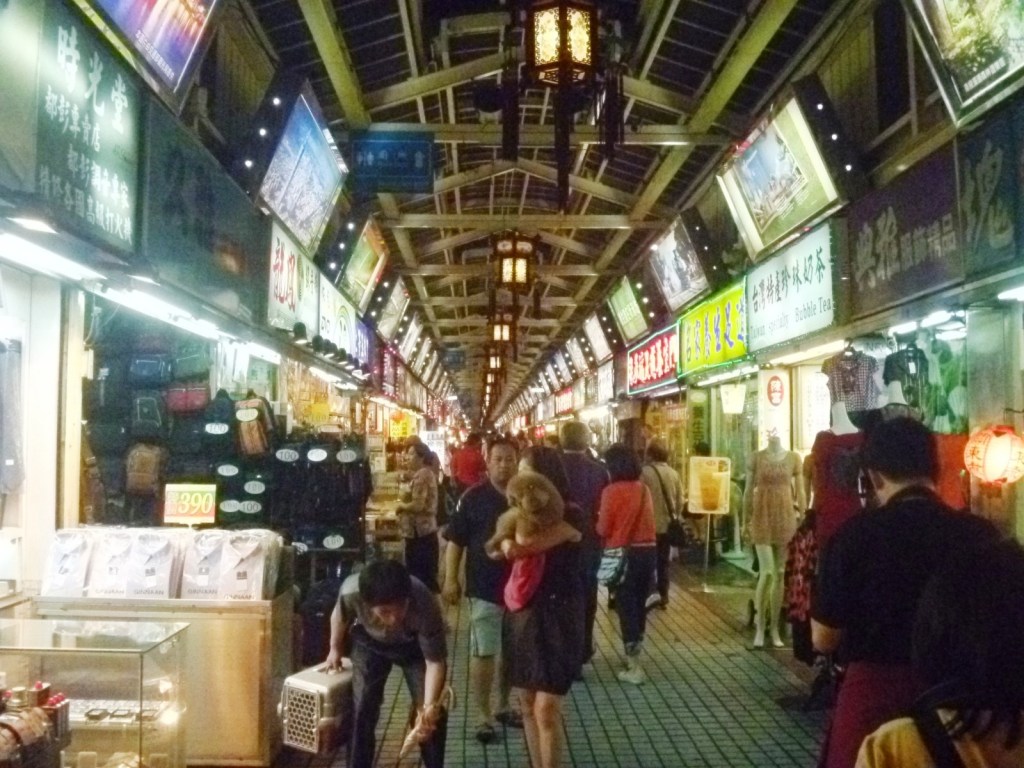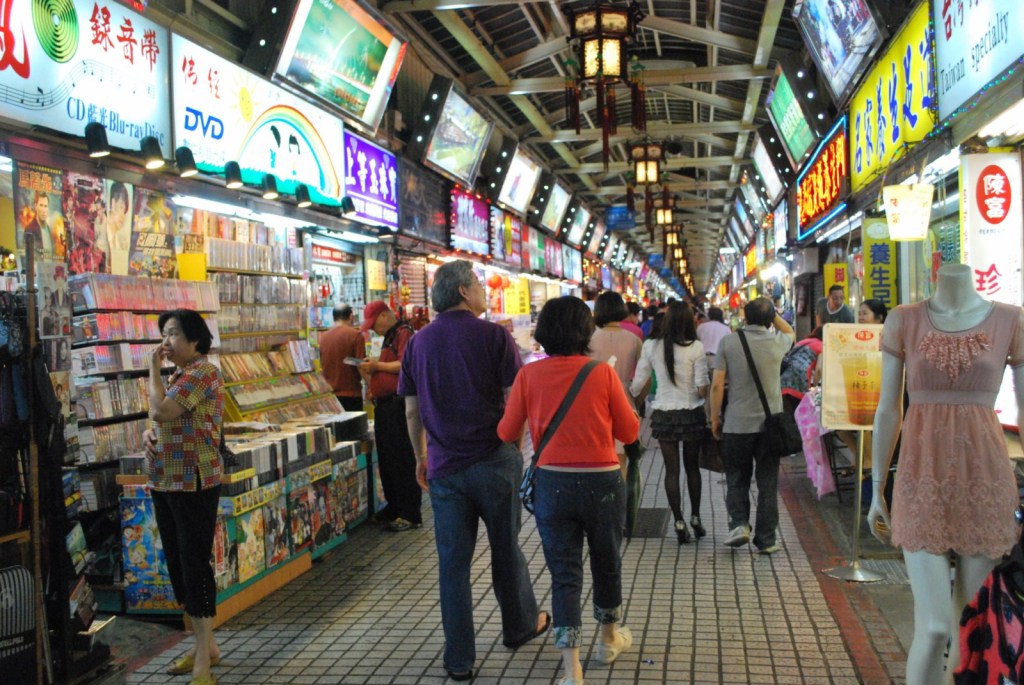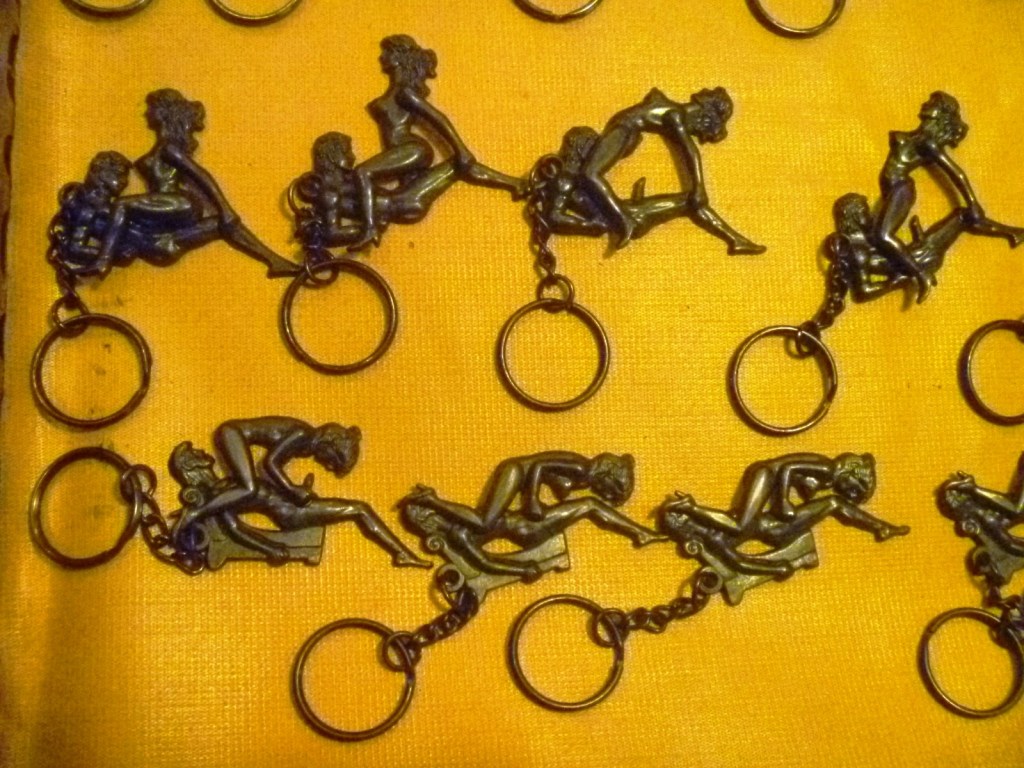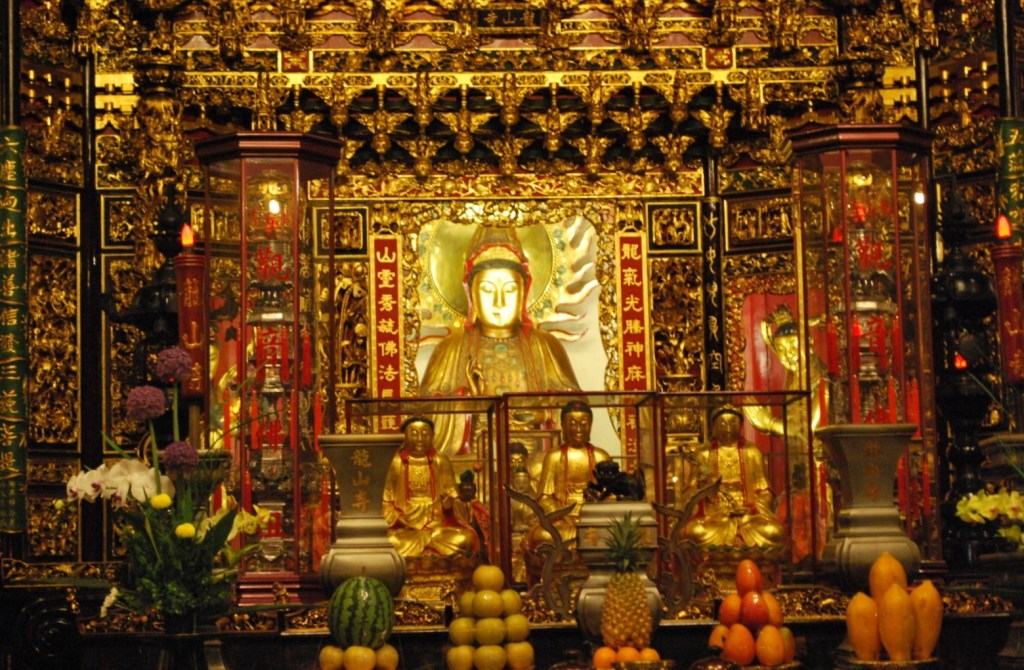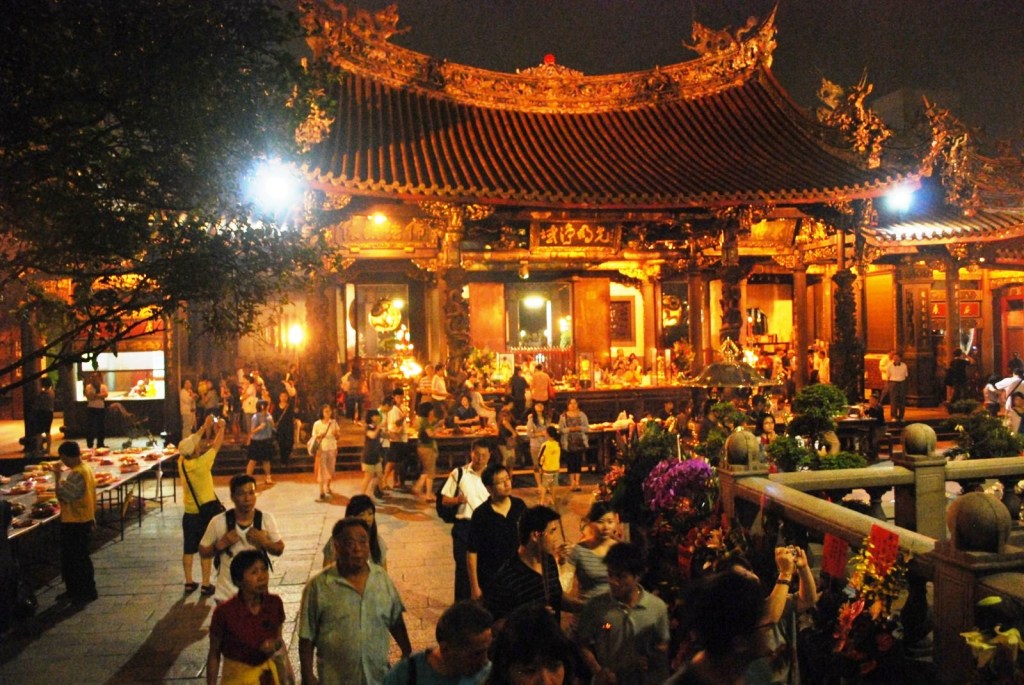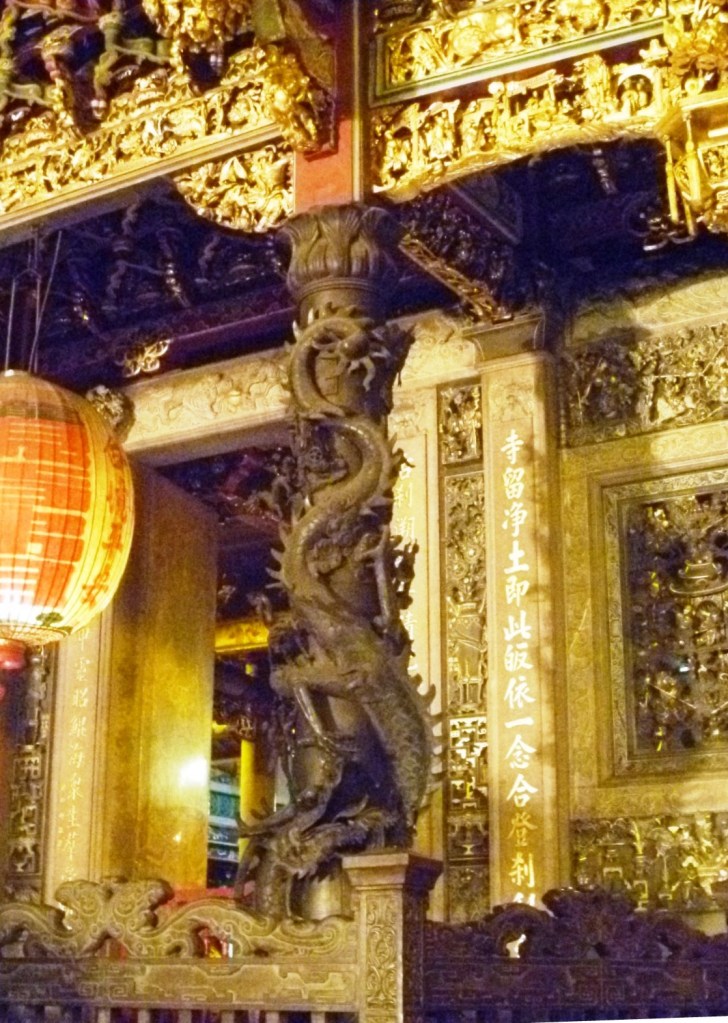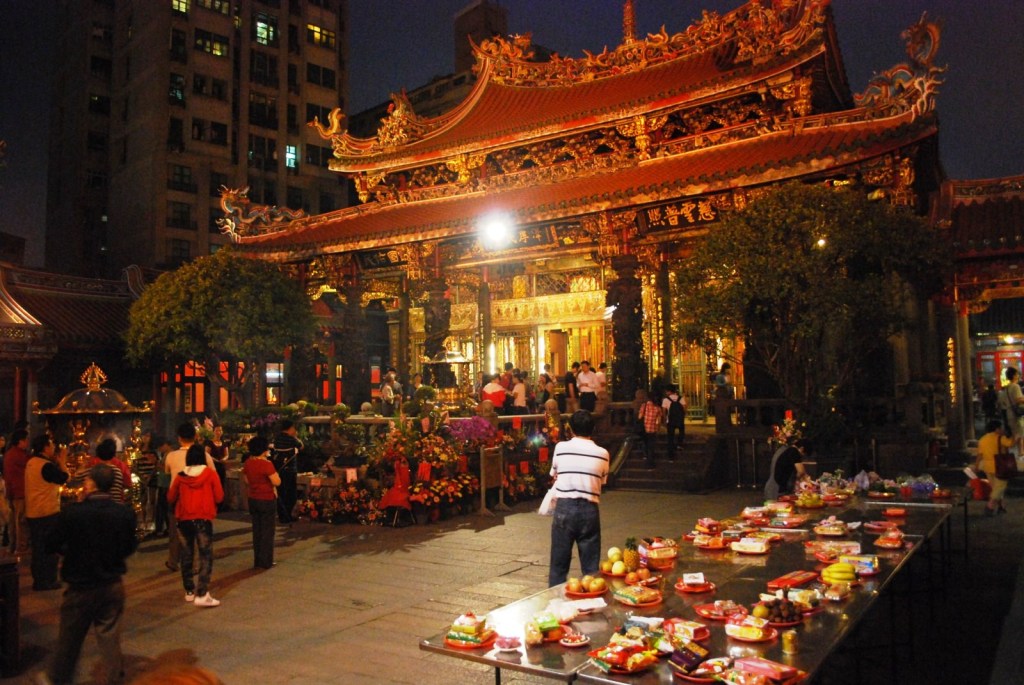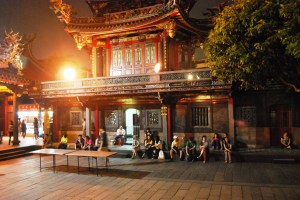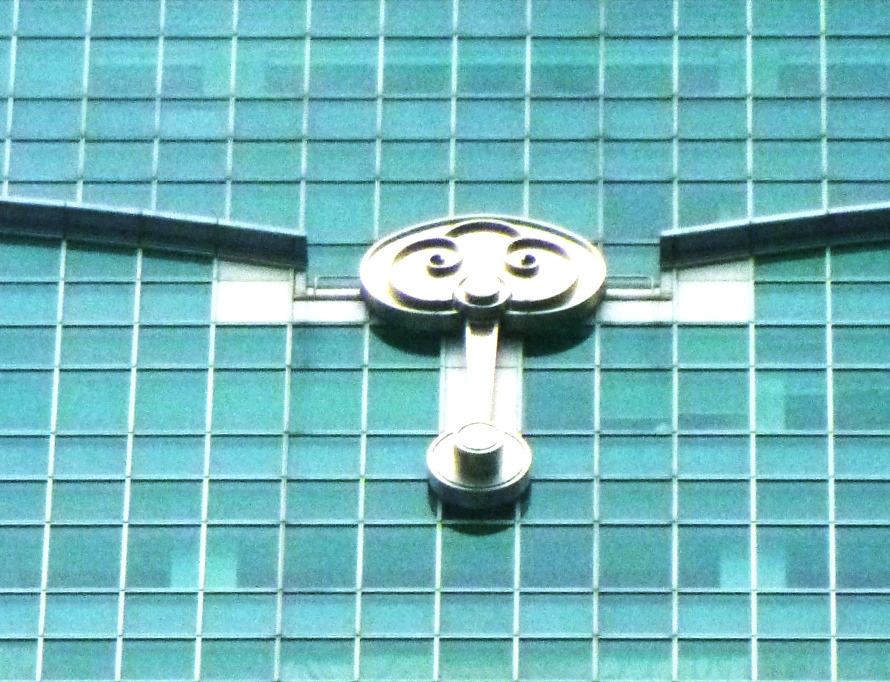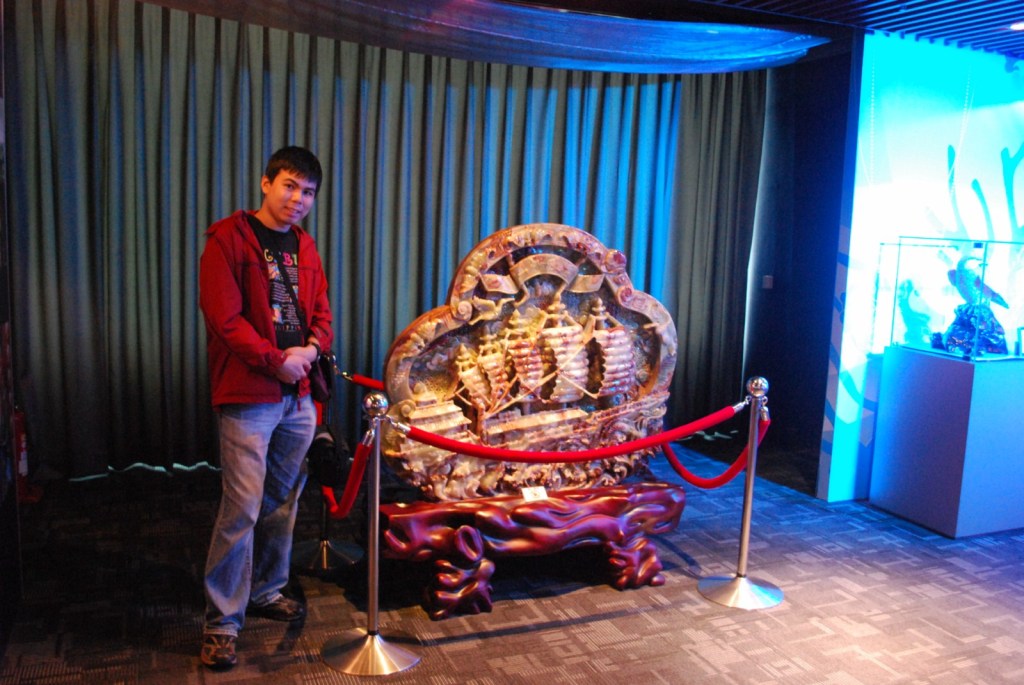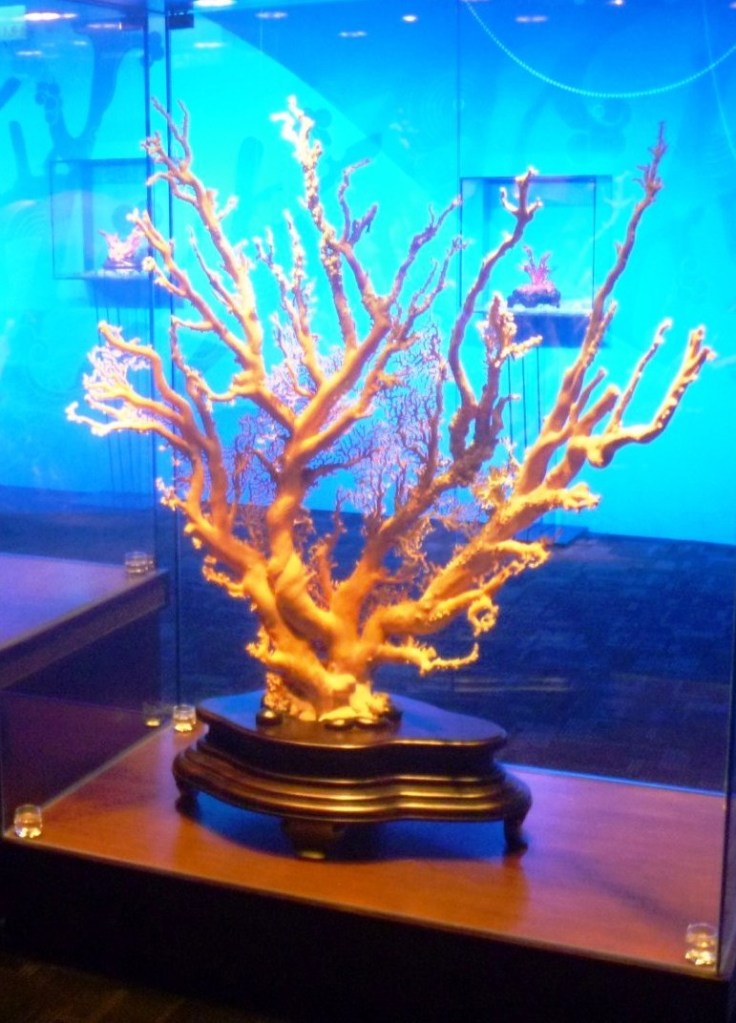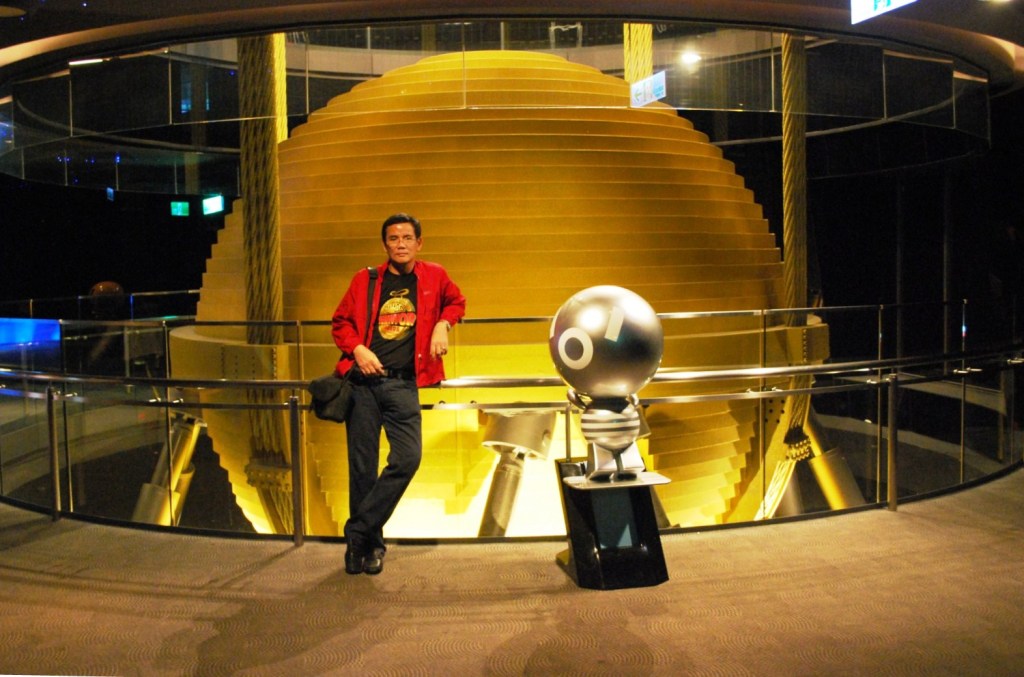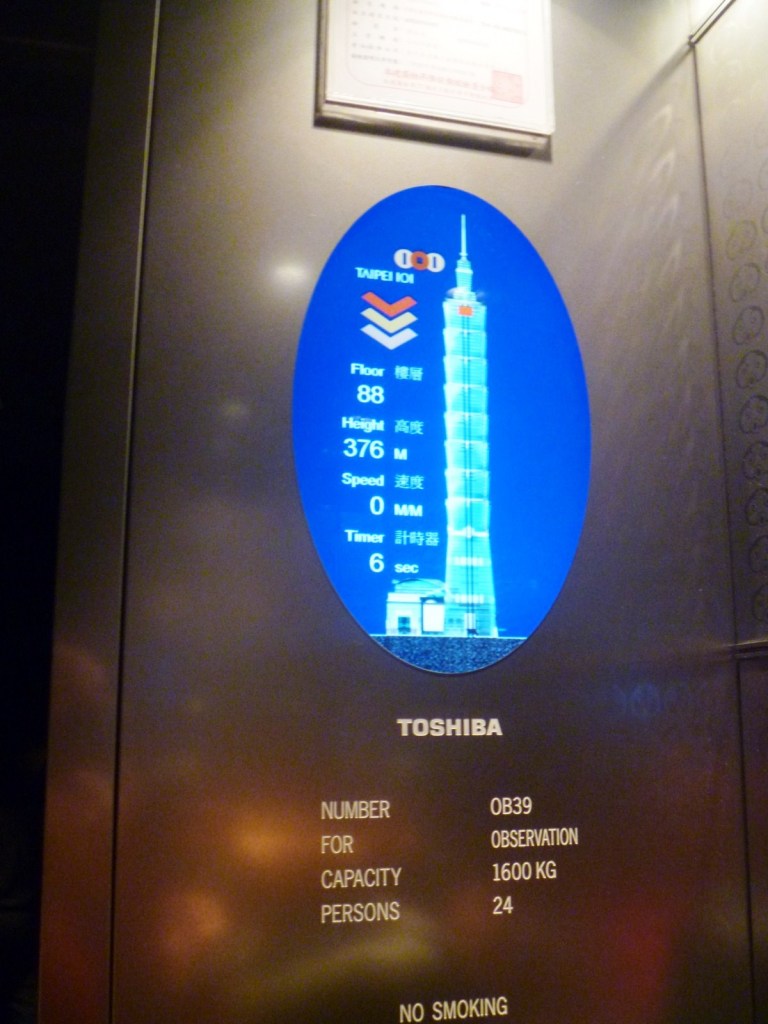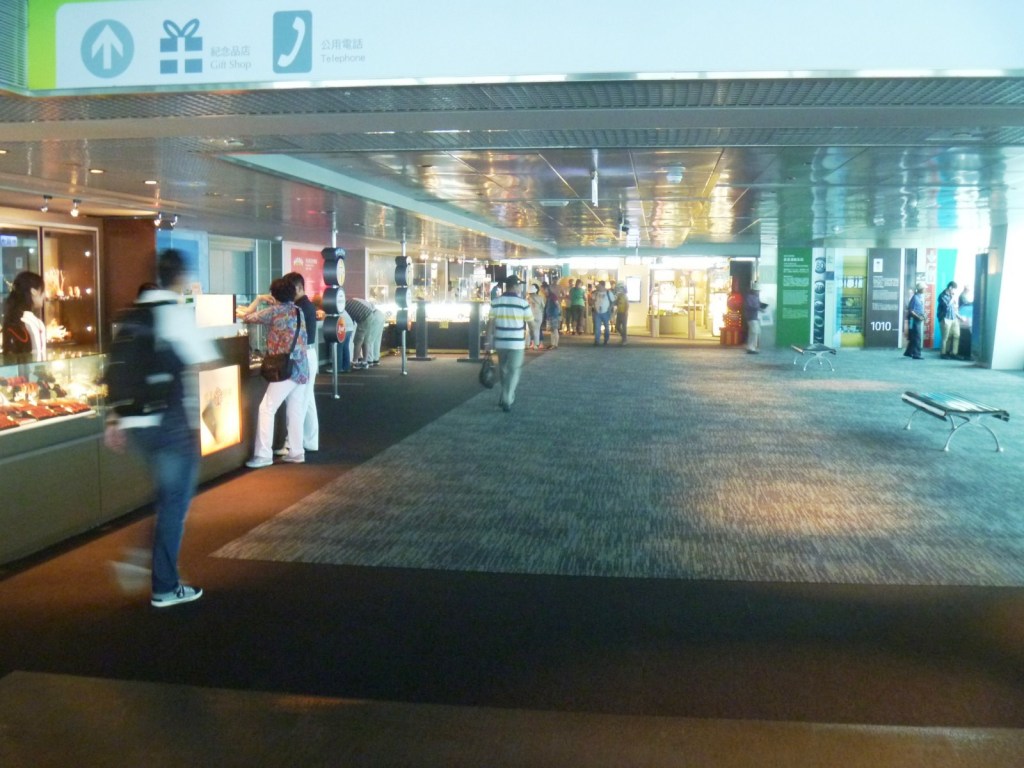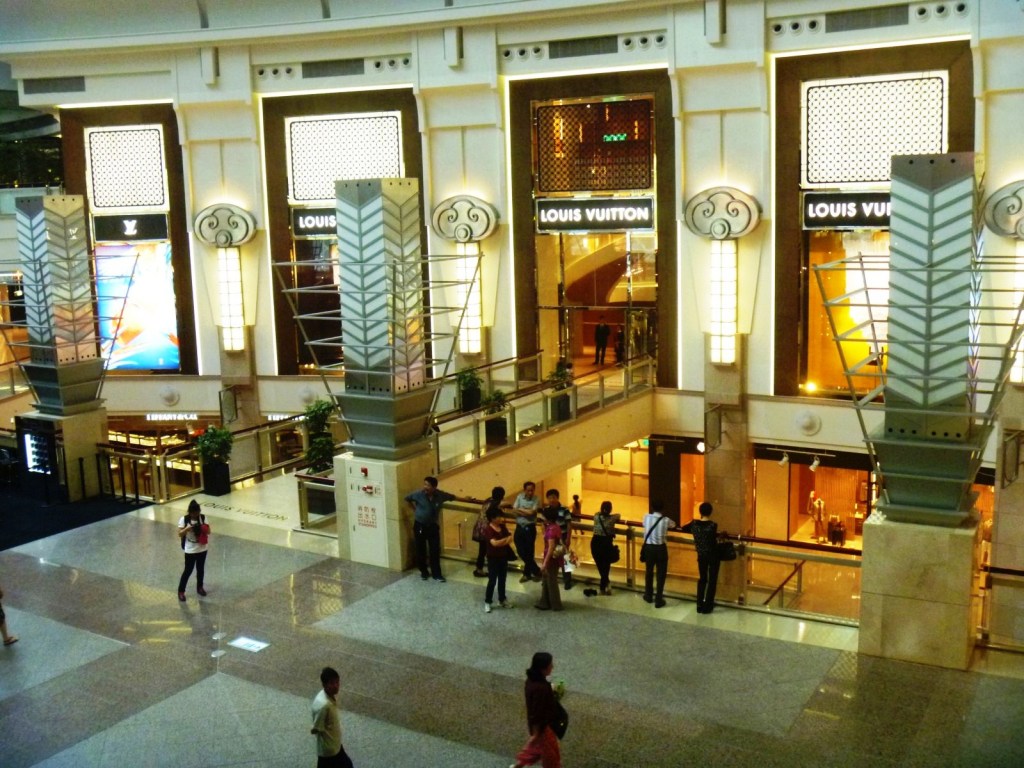From Chang Chung Park, we next proceeded, down the hill and out of the city proper, to Yehliu Geological Park. Along the way, we passed the remains of the Taiwanese-owned, Panama-registered gravel ship Jui Hsing. On October 3, 2011, this 155 m. long, 11,500 ton ship, bound for Fujian province in China, ran aground and broke in half, in high seas 185 m. off Dawulun Beach, near Keelung Harbor, during the height of Typhoon Nelgae. Of its 21-man crew, 6 were killed, 4 missing and 11 were rescued.
When we arrived at the Visitor’s Center (Yehliu Nature Center), the parking lot was filled with tourist buses loaded with tourists bound for either Ocean World, Yehliu Geopark or both. Ocean World, the first marine center in Taiwan for exhibition of ocean evolution, has an undersea sightseeing tunnel where you can observe about 200 rare fish species. Its 3,500-seat stadium is also the site of excellent shows featuring whales, dolphins and seals doing diving, ballet on water and other talent shows.
However, we were just here for the Geopark. Operated by the North Coast and Guanyinshan National Scenic Area Administration, the park is located on a cape, also known as the Yehliu Promontory, that forms part of the Taliao Miocene Formation. Stretching approximately 1,700 m. into the sea, it was formed as geological forces pushed Datun Mountain out to the sea. When seen from the air, the place looks like a giant turtle sinking into the sea, thus it is also called “Yehliu Turtle.”
Its sandstone seashore is subjected to sea erosion, weathering and earth movements giving rise to a scenery consisting of sea trenches/holes, candle-shaped rocks and pot-shaped rocks. The lunar-like landscape is divided into 3 sections, the first 2 of which were visited by us. The first section has cleavages, potholes, melting erosion panels and mushroom and ginger rock formations such as the “Ice Cream Rock” and the “Candle.”
The second section, similar to the first area but with lesser numbers of mushroom and ginger rock rock formations, is home to the iconic “Queen’s Head” (the unofficial emblem for the town of Wanli), “Bean Curd” and the “Dragon Head.” Near the coast, rocks here have also developed into 4 different kinds of formations: “Elephant Rock,” the “Fairy’s Shoe,” “Earth Rock” and “Peanut Rock,” special shapes resulting from sea erosion.
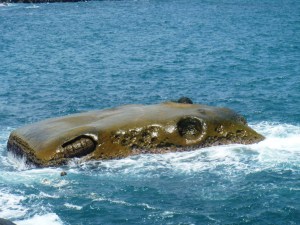
“Elephant Rock” Legend has it that a fairy forgot to bring the elephant back when she defeated the turtle elf; as result, the elephant stood there waiting to be taken home, refusing to go ashore.
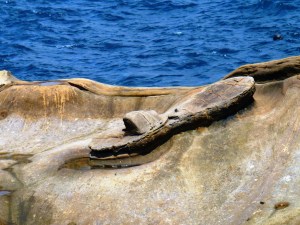
“Fairy’s Shoe” Legend has it that this one piece of shoe was left accidently by a fairy that came down to earth to tame the naughty turtle elf.
Yehliu Geopark’s distinctive features are the hoodoo stones that dot its surface. These rock formations have been given imaginative names based on their shapes. The most well-known is the iconic “Queen’s Head.” Other formations include “The Fairy Shoe,” “The Bee Hive,” “The Ginger Rocks” and “The Sea Candles.”
The much narrower third section, the wave-cut platform located on the other side of Yehliu, has sea-eroded caves, seal-shaped rock, etc. One side of the platform is adjacent to steep cliffs while, down below, the other side is a scene of torrential waves. It has several rocks of grotesque shapes and sizes, all a result of sea erosion, including the “24 Filial Piety Hill,” “Pearl Rock” and “Marine Bird Rock.” In addition to the said rock landscapes, the third area also includes the major ecology reserve of Yehliu Geopark.
While touring, we also noticed a statue dedicated to Lian Tian Zhen, a local fisherman who, on March 18, 1964, jumped into the sea to save student Chang Guoquan who fell into the sea by accident. Unfortunately, both of them drowned.
Yehliu Geological Park: No.167-1, Kantung Rd., Yehliu Village, Wanli District, New Taipei City 20744, Taiwan. Tel: (+886-2) 2492-2016. Fax: (+886-2) 2492-4519. Website: http://www.ylgeopark.org.tw. E-mail: info@ylgeopark.org.tw. Open 8 AM-6 PM. Admission: NT$50 (20% discount for group ticket of 30 people or more).
How to Get There:
From Taipei City, take the Kuo-Kuang Co. express bus bound for Jinshan Youth Activity Center at its West Station A
From Keelung City, take the express bus bound for Jinshan or Tamsui at Keelung station (near Keelung Railway Station)
From Tamshui, take the express bus bound to Jinshan at Tamshui station (near Tamshui MRT Station).

